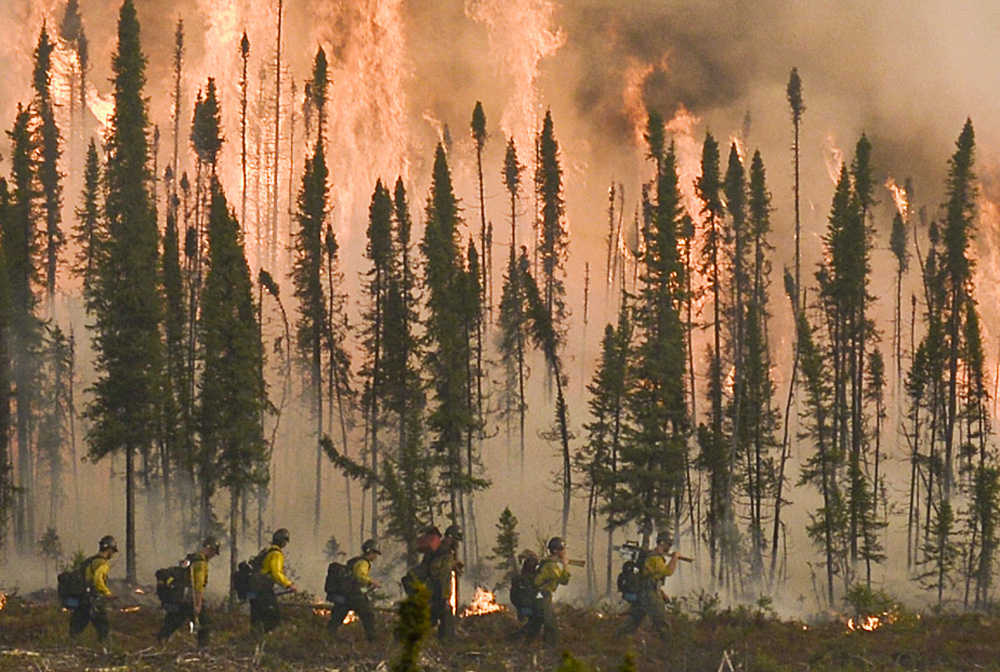ANCHORAGE, Alaska — Green leaves have popped out on trees throughout interior Alaska, but the dry vegetation below is putting wildfire responders on edge.
Grasses still brown from a lack of spring rain, combined with high temperatures and low humidity, have made the region a tinderbox. The Yukon Flats, the Tanana River Valley and the Copper River Basin remain under “red flag” alerts and burn bans because of the high danger of fire.
“We still have a lot of dead, dry grass that could burn,” said Tim Mowry, information officer at the Alaska Interagency Coordination Center in Fairbanks. A meteorologist described the conditions as “an insanely dry air mass sitting on top of us,” Mowry said.
Temperatures this week edged into the high 70s and low 80s with low humidity, evaporating precious moisture from already dry undergrowth. The conditions are expected to last into Memorial Day weekend.
The same weather system is drying out southcentral Alaska and even making coastal rainforest on the Panhandle susceptible to forest fire, Mowry said.
In the last decade, an average of 1,875 square miles of forest has burned annually in Alaska. Many of the largest fires started by lighting in remote areas.
The state so far has recorded 27 wildfires, including nine still active, but they’ve covered only 5.3 square miles.
They include the Bolgen Creek Fire covering almost 1 square mile along the Steese Highway between Circle and Central. Fire officials reported Wednesday afternoon that the 179 people assigned to the fire had it 60 percent contained.
The Seaton Roadhouse Fire, burning on both sides of the Alaska Highway about 50 miles northwest of the Canada border, on Thursday was estimated at nearly 500 acres, or just under 1 square mile.
Traffic on the state’s highway to Lower 48 states was slowed to about 10 mph through a half-mile section of highway, and a pilot car led motorists through smoke.
The state Division of Forestry responded with aircraft — a water-scooping airplane, three retardant tankers and a helicopter dropping water — plus six ground crews.
All but one 2015 fire were caused by humans.
“We’ve had fires started by lawnmowers — grass catching on fire on the engine of a lawnmower and then dropping on the ground,” Mowry said. A fire in Delta started as a man ground an edge on a plow, creating sparks that ignited hay. The fire spread to the forest.
Alaska had dry conditions last spring, but the fire season fizzled quickly after a blaze started in May on the Kenai Peninsula and burned 306 square miles, mostly in the Kenai National Wildlife Refuge. By early June rains lowered fire danger, and only 365 square miles burned during fire season.
Alaska’s largest burn year since record-keeping began in 1939 was 2004, when 10,900 square miles of forest burned.
Fire officials don’t try to make predictions for the season.
“It’s all weather-dependent,” Mowry said. “Going beyond a week is really difficult.”

